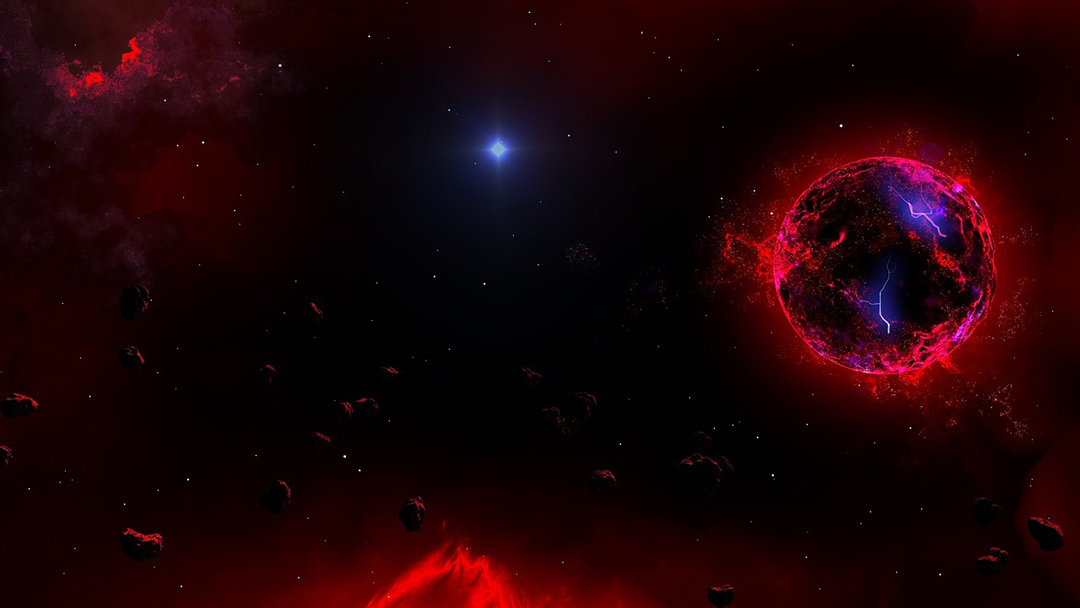A recent study suggests that finding elusive dark matter, which has thus far remained undetected, could be possible using observations made of neutron stars — the incredibly dense remnants of massive stars’ collapsed cores.
The researcher team from China have calculated that dark matter pulled in by a neutron star’s immense gravity could significantly change its radius and its ability to maintain its shape under an external gravitational field, known as tidal deformability. This opens a new avenue for probing dark matter properties by examining neutron star physics.
Observations of stars’ motion within their galaxies, as well as the subtle characteristics of the Big Bang’s afterglow, known as cosmic microwave background radiation, indicate that over 80% of the Universe’s matter could be composed of this mysterious substance that neither emits, reflects, nor absorbs light — aptly named dark matter.
Despite its abundance, dark matter’s extremely weak interactions with other particles and radiation have made direct observations in the lab extraordinarily challenging. Both ground-based and space-based experiments aimed at detecting dark matter particles have yet to yield conclusive results.
Could neutron stars be the key?
The difficulty in directly detecting dark matter and the challenge of studying many of its properties on a galactic scale have prompted scientists to seek alternative methods. In a recent study, Hongyi Sun and Dehua Wen of South China University of Technology proposed a technique to detect dark matter by observing specific properties of neutron stars.
“Due to the weak coupling strength of gravitational interaction, it is easier to see the effects of dark matter on normal matter under extreme gravitational conditions,” Wen, the lead author of the study, said in an email. “A neutron star is one of the most compact objects in the universe that has such an extreme environment. Neutron stars may absorb enough dark matter to have a significant effect on the macroscopic properties of themselves, such as radius and mass. So we can study the properties of dark matter and neutron stars from that effect.”
The properties of dark matter particles, including their mass, interaction strength, and internal angular momentum (spin) are largely unknown. Sun and Wen, therefore, had to conduct a comprehensive theoretical analysis of how dark matter interacts with neutron stars across various models.
“We have utilized three types of dark matter models — self-interacting bosons, ideal Fermi gas, and self-interacting fermions. We believe that our results are independent of the dark matter model used,” said Wen.
The team discovered that depending on the amount of dark matter attracted by a neutron star and the properties of the constituent particles, dark matter can significantly alter the neutron star’s properties. These changes can be observed during events such as neutron star collisions with other neutron stars or black holes.
These celestial bodies generate an extremely strong gravitational field, deforming the neutron star based on its tidal deformability. The extent of this deformation during a merger affects the emitted gravitational waves’ properties. Studying these waves can provide insights into the dark matter content of neutron stars and the properties of dark matter particles.
“We found that for a series of dark matter admixed neutron stars at a fixed mass, those with smaller normal matter radii have larger tidal deformabilities,” explained Wen. “This negative correlation does not exist in the normal neutron stars. In other words, if the observation finds that the neutron star has a smaller observed radius but a larger tidal deformability, it will indicate the existence of dark matter in neutron stars.”
A more streamlined search for dark matter
Although current observations of neutron star mergers have not yet revealed the effects analyzed in this study, the authors believe that more precise future observations will enable the application of their method. This could yield critical data on both dark matter and neutron star properties.
“Due to the increasingly diverse observational methods, we can investigate dark matter and neutron stars from more perspectives,” concluded Wen. “We believe that the existing or future observational methods can be used to gain a deeper understanding of the rich phenomena of neutron stars and the essence of dark matter. Besides, there are still many unresolved problems about dark matter and neutron stars, and the combination of the two provides us another new standpoint to consider these problems.”
The proposed method may be even more powerful than anticipated, potentially studying the dark matter content of neutron stars without needing to measure the challenging tidal deformability.
“The suggestion to look for how both the deformability and radius of a neutron star may change seems a bit complicated,” said Charles Horowitz, a professor at Indiana University who was not involved in the study. “It may be enough to show that there are neutron stars of a given mass with different radii. This would demonstrate that neutron stars can have different dark matter contents.”
This approach could streamline the search for dark matter’s effects in neutron stars, providing a simpler yet effective strategy. By leveraging future observations and refining theoretical models, scientists may uncover new aspects of dark matter and deepen our understanding of the Universe’s most enigmatic substance.
Reference: Hongyi Sun and Dehua Wen, New criterion for the existence of dark matter in neutron stars, Physical Review D (2024). DOI: 10.1103/PhysRevD.109.123037
Feature image credit: Mikkehouse on Pixabay














